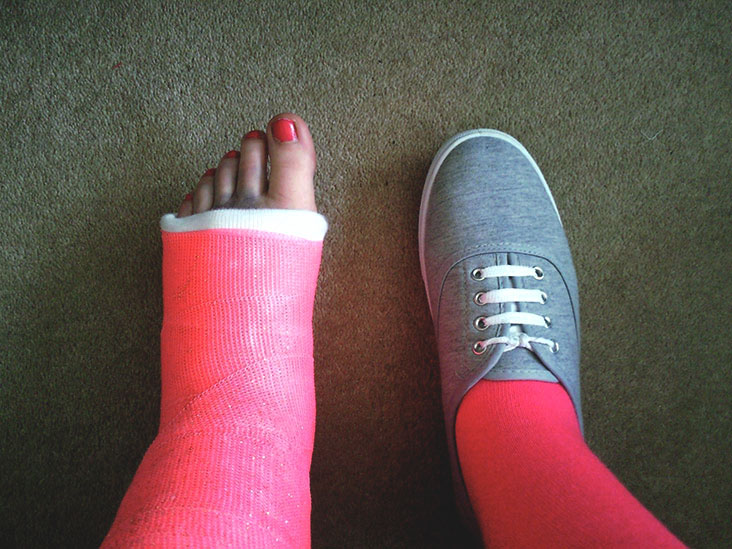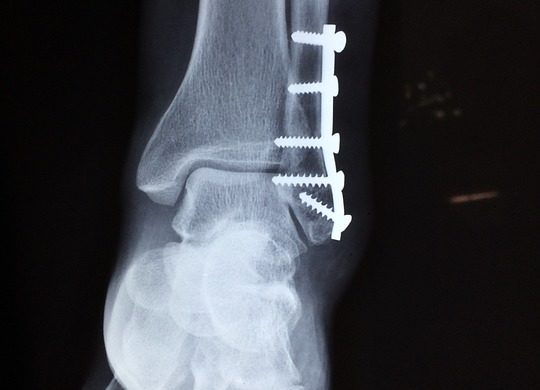Foot and Toe Fractures: Recognizing Misdiagnosis and Seeking Justice
When we go to a hospital or seek help from a healthcare provider, no matter the issue, we expect to be effectively diagnosed and prescribed the proper treatment for whatever ails us. Unfortunately, all too often, injuries and illnesses are either undiagnosed or misdiagnosed. In some cases, a misdiagnosis or delayed diagnosis can significantly harm the patient.
Some of the most commonly missed fractures are foot and toe fractures. In this post, we’ll discuss some of the common causes and symptoms of foot and toe fractures, the consequences of a misdiagnosed foot or toe fracture, and the legal options available to anyone who has suffered because of a missed fracture.
Understanding Foot and Toe Fractures
With their 26 bones, our feet are marvels of engineering and masterpieces of adaptation, defying gravity with every step, propelling us forward, and holding us steady like living foundations. They dance gracefully, endure rugged terrain, and whisper our stories with every scar and callous. However, as marvelous as our feet are, the bones within are subject to breaks and fractures like all of the other bones in our bodies.
Common causes of foot and toe fractures include:
- Sudden impact: Stubbing a toe, dropping something heavy, or falling can fracture bones.
- Repeated stress: Athletes like dancers and runners can develop stress fractures over time.
- Twisting injuries: Spraining an ankle can sometimes fracture nearby bones.
Some of the most common symptoms of foot and toe fractures include:
- Pain, especially when bearing weight
- Swelling and bruising
- Difficulty walking or wearing shoes
- Deformity of the toe or foot
- Tenderness to touch
- Injury to the toenail
What Typically Causes Breaks or Fractures in Your Feet?

Foot bones usually break when something happens to crush, bend, twist, or stretch the bone. Toes are often broken when you accidentally kick something hard. Heels are often broken when you fall from a height and land on your feet. Other bones in the foot sometimes break when you twist or sprain an ankle.
Although most bones break suddenly because of an accident, occasionally, small cracks can form in bones over a longer period of time from repeated stress on the bones. These are called stress fractures and occur most frequently with repetitive movement over a long period of time. These usually occur with athletes such as dancers and runners.
Diagnosis and Treatment of Foot and Toe Fractures
Doctors typically diagnose fractures through examination and X-rays. Treatment depends on the location and severity of the fracture. Some may require only crutches and special shoes, while others may need splints, casts, or even surgery. However, the misdiagnosis of a foot or toe fracture can have a profound effect on one’s life.
The misdiagnosis, undiagnosed, or delayed diagnosis of a foot or toe fracture can have several potential consequences, ranging from mild discomfort to permanent disability. Here are some of the most common outcomes:
- Prolonged pain and discomfort: An improper immobilized fracture will continue to experience stress and movement, leading to ongoing pain and inflammation. This can significantly impact daily activities and quality of life.
- Improper healing and deformity: Without proper alignment and support, the bones may heal in an abnormal position, resulting in a deformity of the toe or foot. This can affect gait, shoe fit, and overall function.
- Osteoarthritis: Damage to the joint surfaces due to a misaligned or improperly healed fracture can increase the risk of developing osteoarthritis later in life. This can lead to chronic pain, stiffness, and difficulty moving the affected joint.
- Compartment syndrome: In severe cases, swelling and inflammation within the enclosed spaces of the foot can compress nerves and blood vessels, leading to compartment syndrome. This is a medical emergency that requires immediate surgery to prevent tissue damage and potential amputation.
- Psychological distress: Living with chronic pain, deformity, and functional limitations can take a toll on a person’s mental and emotional well-being. Anxiety, depression, and decreased self-esteem are common consequences of misdiagnosed or untreated foot fractures.
- Financial burden: The costs associated with misdiagnosed fractures can be significant. This includes additional medical expenses for prolonged treatment, surgery, pain management, and potentially lost wages due to missed work.
What treatments are available for broken bones?
Treatment for a broken bone in the foot depends on which bone is broken and how it is broken. Some broken bones in the foot can be treated with crutches and flat-bottom shoes, others require splints or casts, and still others require surgery to repair the bones.
Treatment for a broken toe depends on the location and severity of the fracture. The fracture may need to be put back into place (reduced) and splinted or casted. A minor fracture may only require the doctor to tape a broken toe to the toe next to it for support (buddy taping). A more serious injury could require surgery and the use of pins or screws to repair the bone.
Signs and symptoms that your medical practitioner will be looking for are toe or foot pain, swelling, stiffness, bruising, deformity, difficulty walking, injury to the toenail, or feeling that shoes are too tight. Sometimes a doctor’s examination is all that is needed to be certain bones in the midfoot are broken. Sometimes an X-ray is required to determine if there is a fracture.

Negligence and the Potential for Malpractice
There are several ways a misdiagnosis or missed diagnosis of a foot or toe fracture can happen, and they often involve a combination of factors, including:
- Overlooking key symptoms: Subtle symptoms like mild swelling or limited range of motion might be attributed to sprains or other soft tissue injuries.
- Relying solely on physical examination: While some fractures are evident through visible swelling or deformity, X-rays are crucial for confirming a diagnosis, and in some cases, doctors might not order them if the physical exam seems inconclusive.
- Misinterpretation of imaging: Even with X-rays, fractures can be challenging to spot, especially small hairline fractures or those in complex areas of the foot. Sometimes, radiologists or doctors might misread the images, missing the fracture altogether. A missed fracture foot X-ray happens quite often.
- Lack of experience or awareness: While most healthcare professionals are adept at diagnosing common injuries, less experienced clinicians or those unfamiliar with specific types of fractures might be less likely to pick up on subtle signs.
Seeking Justice for Foot and Toe Fracture Misdiagnosis Victims
If you suspect a missed or delayed diagnosis of a foot or toe fracture, consider consulting a medical malpractice attorney. An experienced lawyer can help you determine if you have a case and navigate the legal process.
The experts at Thistle Law are well-versed in medical malpractice cases, including those involving foot and toe fractures. We understand the complexities of these injuries and the impact they can have on your life. If you believe you have been a victim of negligence, contact us today for a free consultation by calling 215-525-6824 or filling out our contact form.

